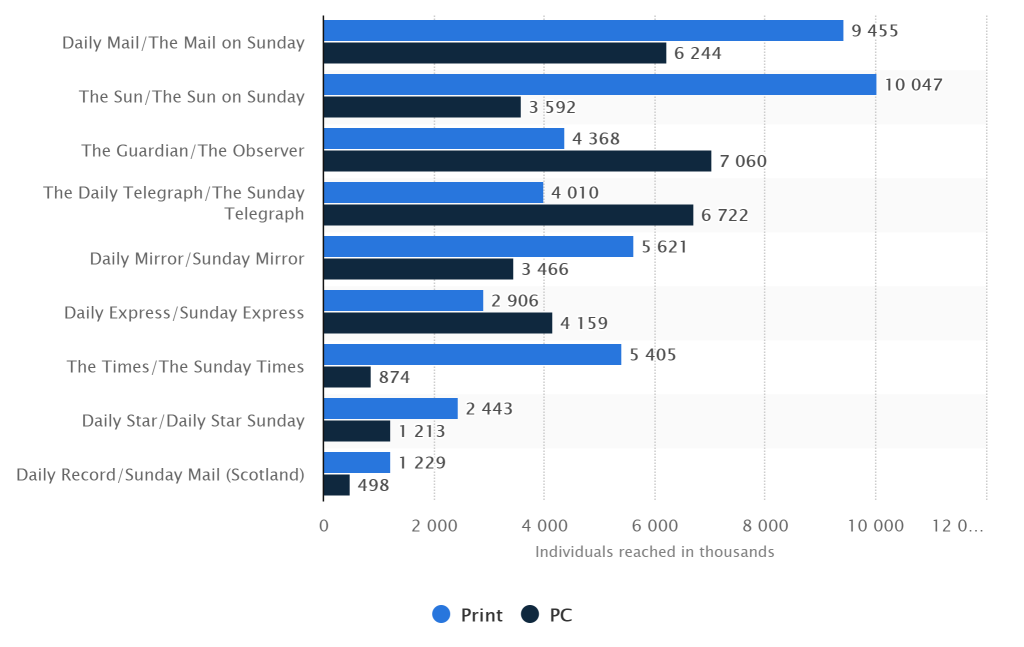Introduction
The purpose of this blog post is to understand the opportunities to promote adoption of SoccerNet through available communication channels. This post is part of a series of blog posts based on Everett Rogers’ model for promoting the diffusion of innovation. The first element is ‘the innovation’, the second is the ‘communication channel’, the third is ‘time’ and the fourth is the ‘social system’. With a view towards the social system, Rogers suggest there are three types of decision to adopt or reject an innovation, and the most appropriate for this social network is a ‘collective-innovation decision’. Other types of decision are individual and authority, neither of which are appropriate for a community over which the FA has no authority. In a collective decision, choices to adopt or reject are made by consensus among the members of a system (Rogers, 2003, p38). The most appropriate choice of communication channel must promote this consensus.
Mass Media and New Media
A communication channel is how messages propagate from one individual to another for which, broadly speaking, there are two channels: Mass Media, comprising television and print media among others; and New Media, comprising online internet-based channels. According to 2017 figures from UK Broadcasters Audience Review Board (BARB) the Euro 2016 Football Tournament reached 50.4m people while the Olympic Games reached 50.2m on live television, moreover, the most watched programme, the Great British Bake Off reached 13.6m (BARB, 2017, p. 25). For print media, there appears to be a transition from print to online consumption of content as shown in figure 2 from statistica.com. This finding shows a mixed picture of communication channels between print and online media. These figure show that while New Media is challenging more familiar communication channels, Mass Media continues to have reach potential to large audiences. So what is ‘new’ about New Media?

Figure 2. Monthly reach of leading national newspapers in the United Kingdom (UK) from October 2016 to September 2017, by platform (in 1,000 individuals) (Statista, 2016)
When subjective interpretations of innovativeness are important to Rogers, attributing ‘Newness’ to an innovation could well enhance perceptions of innovativeness and, therefore, rates of adoption. The word ‘new’ carries connotations of ‘cutting edge’ or ‘avant garde’, something with which forward-thinking people might prefer to be associated (Martin Lister et al., 2009, p11). Beyond perceptions, the reality of New Media has transformed Mass Media as a prescient example of Schumpeter’s notion of ‘creative destruction’ for entrepreneurship (see Cojocaru and Cojocaru, 2014, p116). Perhaps, it is for this reason the term ‘New Media’ is prevalent to promote adoption of internet-based innovation.
The Internet
For Rogers, Mass Media channels are more effective in creating knowledge of a product, however, interpersonal channels are more effective in persuading an individual to accept or reject an new idea…and the internet has become more important’ for the diffusion of certain  innovations (Rogers, 2003, p18). To understand the internet’s reach potential, according to the latest figures from the Office of National Statistics, 90% of UK households have internet access and 73% of adults access the internet through mobile phones (ONS, 2017). For Social Media, Statistica.com estimates usage to be 42 million for UK adults in 2017 (Statista, 2017). Beyond the reach potential for New Media, to what potential does Rogers refer for Interpersonal channels?
innovations (Rogers, 2003, p18). To understand the internet’s reach potential, according to the latest figures from the Office of National Statistics, 90% of UK households have internet access and 73% of adults access the internet through mobile phones (ONS, 2017). For Social Media, Statistica.com estimates usage to be 42 million for UK adults in 2017 (Statista, 2017). Beyond the reach potential for New Media, to what potential does Rogers refer for Interpersonal channels?
In contrast to Mass Media, online channels have enabled a shift from ‘audiences’ to ‘users’, and from ‘consumers’ to ‘producers’ (Martin Lister et al., 2009, p. 10) creating the potential for online dialogue. These changes infer more interactive and interpersonal experiences for users, for which online Social Media is prescient example. Mass Media audiences only consume content whereas Social Media users both consume and produce content. This more interpersonal relationship enables entrepreneurs to engage in dialogue with users to promote its diffusion. With this ability for online dialogue, Social Media is both the innovation and communication channel to promote its diffusion.
An ability to engage in dialogue between entrepreneurs and adopters gives rise to the possibility of promoting a sense of ownership among the social system through ‘collaborative innovation’ and ‘re-invention’. ‘Collaborative Innovation’ is used to describe teams of self-motivated people with a collective vision to collaborate towards a common goal by sharing ideas, information and work (Cojocaru and Cojocaru, 2014, p. 117). Whilst this idea perhaps focusses on internal organisational structures, Social Media channels offer opportunities to involve users with its design and development. Rogers uses ‘re-invention’ to describe how adopters often seek to actively participate in customising an innovation to fit their unique requirements. He believes that ‘innovation diffuses more rapidly when it can be re-invented, and its adoption is more likely to be sustained’ (Rogers, 2003, p17). Occurring as a process either in collaboration with or out with the entrepreneur, online dialogue enables ownership through opportunities for customisation.
While online dialogue provides great potential for the diffusion of innovation, there are still many old habits or practices, residual options among new ways to consume content. The earlier statista.com figures for print media show people still consume journalistic content, just using online channels. For other media types, people ‘still watch 90-minute films, in the dark, at the cinema, or gather as families to watch in a fairly linear way an evening’s scheduled ‘broadcast’ television’ (Martin Lister et al., 2009, p9). As figures from the earlier BARB report show, people still view events such as the Great British Bake Off or sporting events such as the Euro 2016 Football Tournament and Olympic Games. An additional interesting finding from this report is a dip in timeshifted viewing during these tournaments (BARB, 2017, p22). ‘Timeshifted’ means to watch a programme after its scheduled start time using a digital device, the BARB report suggests this is due to a remaining desire to gather socially for televised events. As a communication channel, TV still has reach potential around event-based viewing, especially socially important events, where people may congregate to watch the event as a group.
Conclusion
For a consensus based adoption of SoccerNet there are two implications from this short comparison of Mass and New Media. For advertising, while print media has large reach potential through a mix or print and online channels, reading is an individual pursuit, therefore, perhaps less appropriate for collective decision making. Televised media, however, provides the greatest opportunity around event-based television to spread knowledge of the innovation. Helpfully, the most watched events appear to be sport-based, therefore sharing common cultural references with a Footballing social network. The opportunity with televised events is to create conversation among people watching the event to promote adoption through their conversation. Notwithstanding, such a choice also promotes the risk of rejection should SoccerNet fall short of its requirements. The choice to use televised media, therefore, will be when SoccerNet is proven to meet its requirements.
Advertising on New Media has large reach potential, but new opportunities are in online dialogue with the footballing community to gain consensus. Online dialogue means continual engagement between entrepreneurs and users in a reciprocal relationship. As both the innovation and communication channel to promote adoption, positive results in the relationship give a sense of ownership to SoccerNet’s community to make it as useful as possible to users, thereby promoting its adoption. It appears that New Media is most useful in the early stages of development and Mass Media more useful with a formed product.
BARB (2017) Our annual exploration of the UK’s viewing habits. Available at: http://www.barb.co.uk/download/?file=/wp-content/uploads/2017/04/Barb-Viewing-Report-2017.pdf (Accessed: 8 March 2018).
Cojocaru, C. and Cojocaru, S. (2014) ‘Sony vs. Apple – iPod launching, a case study of leadership and innovation’, Manager Journal, 20(1), pp. 115–125. Available at: https://ideas.repec.org/a/but/manage/v20y2014i1p115-125.html.
Martin Lister et al. (2009) New Media: A Critical Introduction. 2nd edn. Oxon: Routledge. Available at: http://lib.myilibrary.com/Open.aspx?id=190114 (Accessed: 7 March 2018).
ONS (2017) Internet Access – Households and Individuals – Office for National Statistics, Internet Access – Households and Individuals. Available at: https://www.ons.gov.uk/peoplepopulationandcommunity/householdcharacteristics/homeinternetandsocialmediausage/bulletins/internetaccesshouseholdsandindividuals/2017 (Accessed: 8 March 2018).
Rogers, E. M. (2003) Diffusion of innovations, Diffusion of Innovation. doi: citeulike-article-id:126680.
Statista (2016) Top national newspapers ranked by reach UK 2015 | Statistic, statista.com. Available at: https://www.statista.com/statistics/246082/distribution-of-the-reach-of-selected-national-newspapers-in-the-uk-by-type/ (Accessed: 8 March 2018).
Statista (2017) UK: social media penetration 2017, Statista.com. Available at: https://www.statista.com/statistics/507405/uk-active-social-media-and-mobile-social-media-users/ (Accessed: 8 March 2018).
